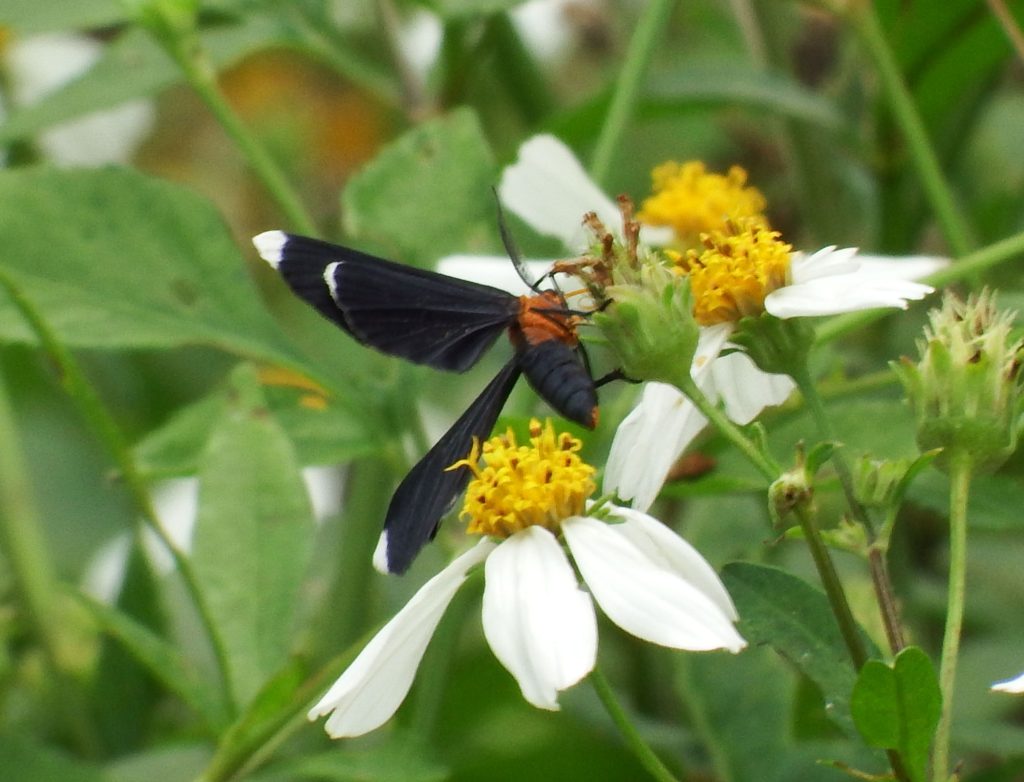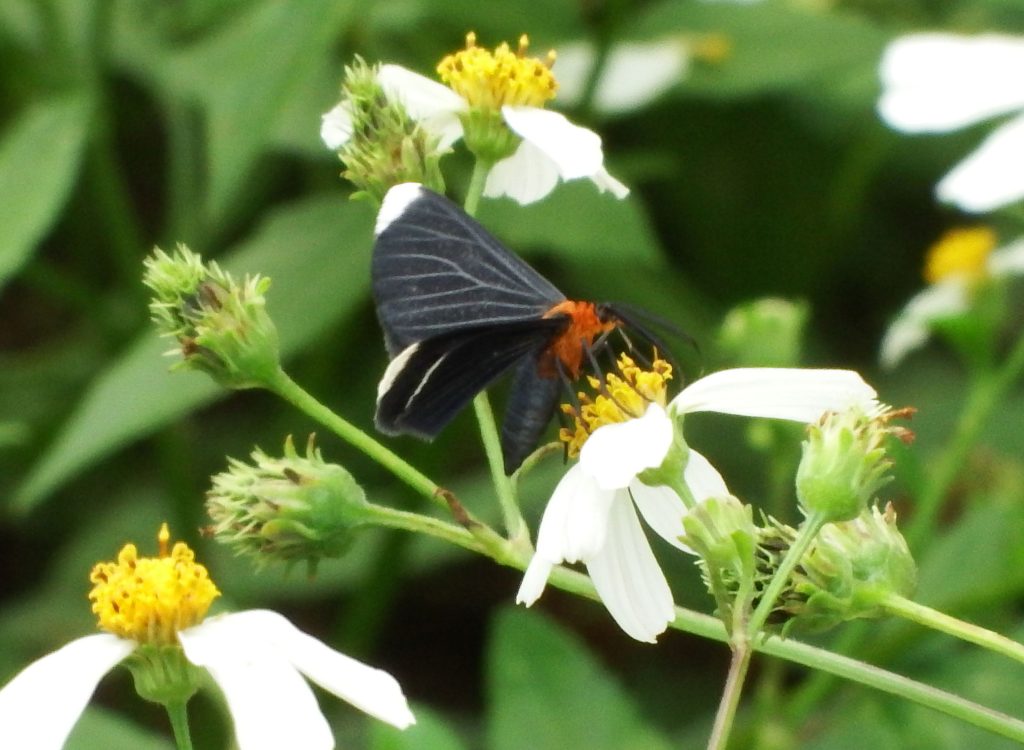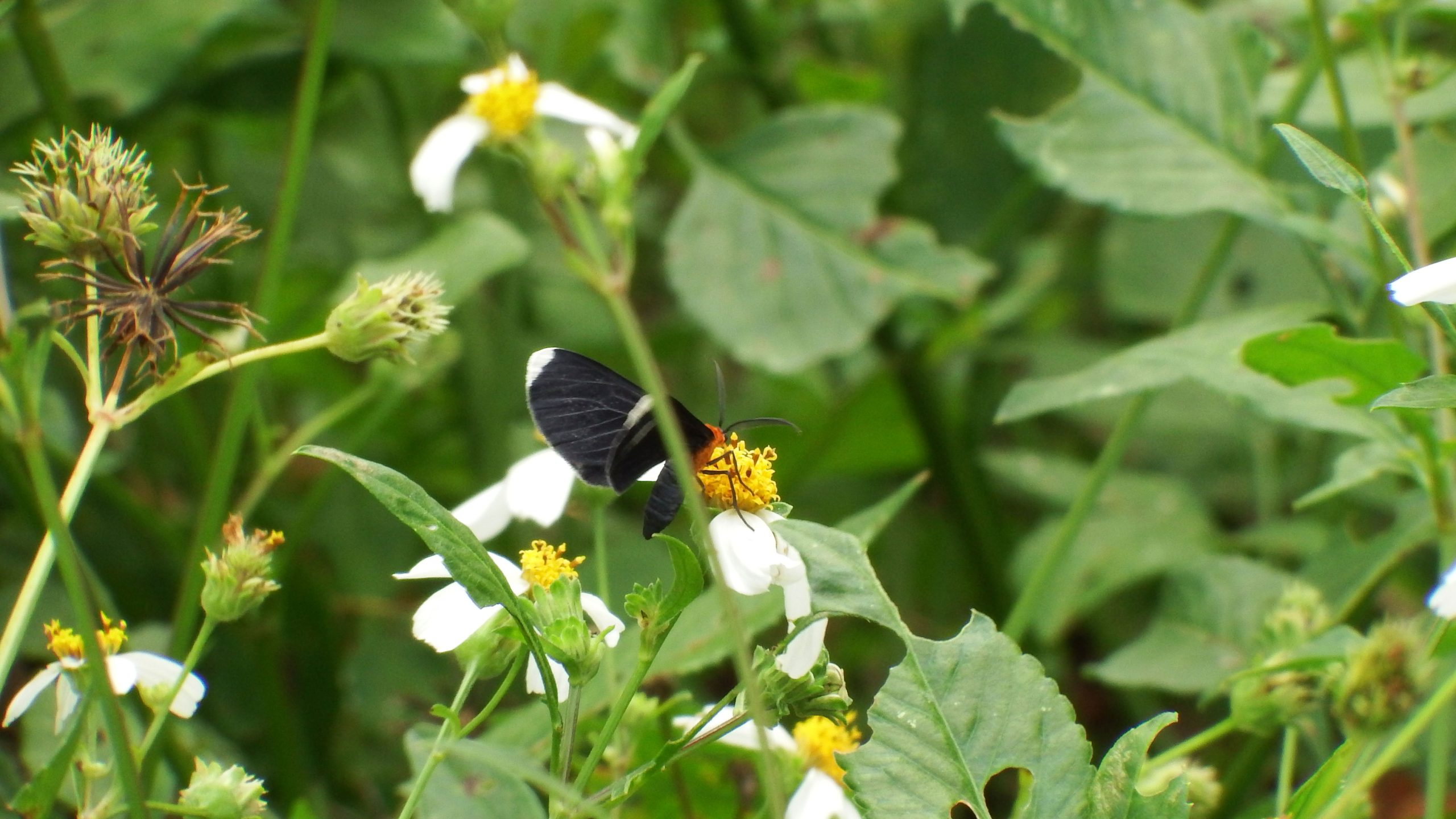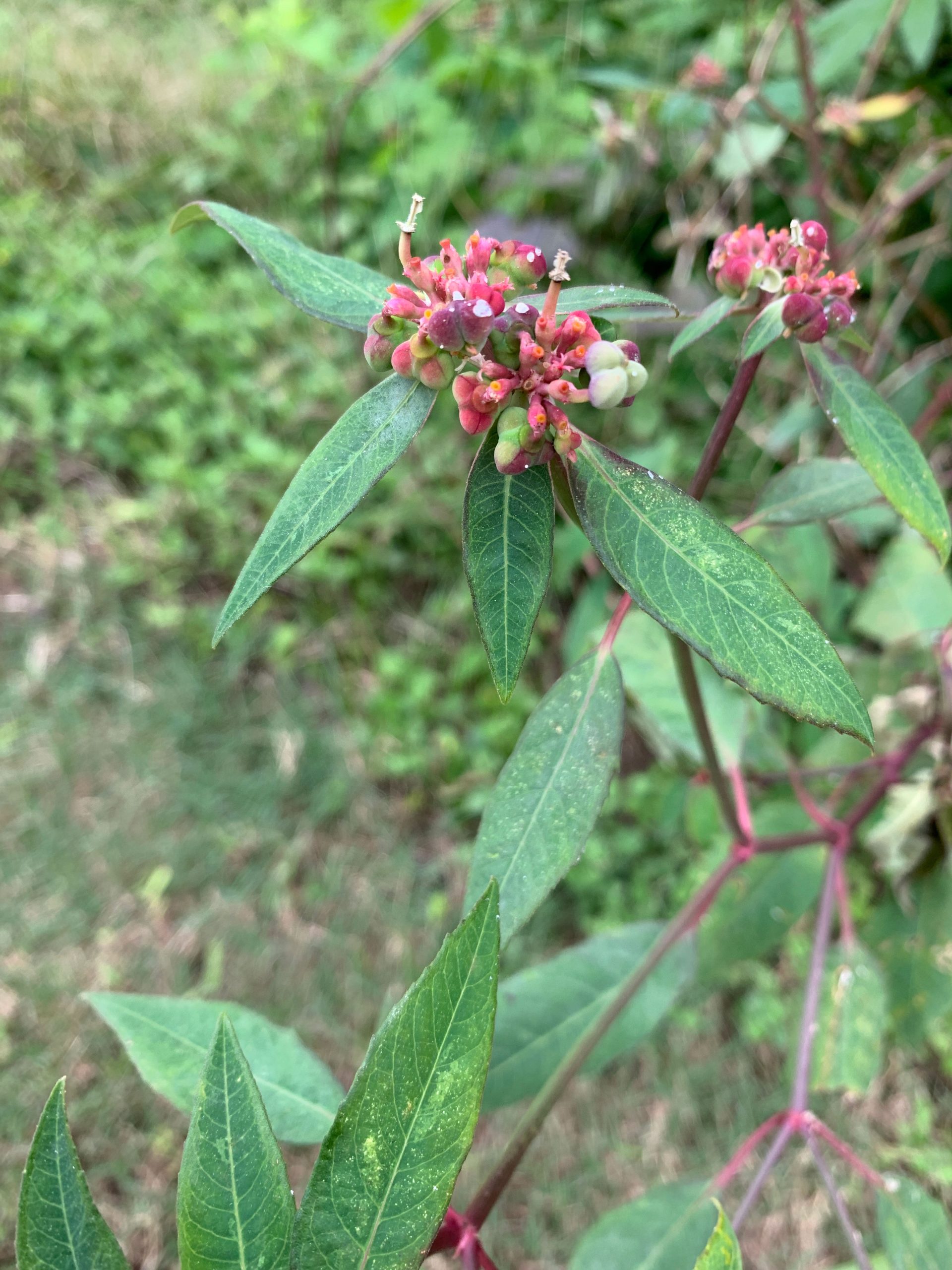A rule-breaking moth

The black tipped white moth is active in the Park right now. I’ve seen this lovely moth only once before in the Park a few years ago and mistook it for a butterfly, which made for a challenging ID. iNaturalist AI wasn’t as robust back then, or I would have had the answer in a matter of moments.
If you look at the antennae in the photo above, you will notice that they are not thin wires, but rather brushy feathers. The style of antennae is a good way to differentiate moths from butterflies.

This lovely moth flies in the daytime unlike most moths who fly at night and it is a Gulf Coast specialty, found from Florida to Texas, rarely straying inland. iNaturalist has a smattering of reports in the Park over the last few years. I saw this individual on the north side, lower path just west of Jackson Hill bridge.

I wasn’t able to find out much information about the black-tipped white moth except that in Florida, the caterpillars are dangerously over-fond of a popular landscape plant called a snowbush. The small striped caterpillar moves like an inchworm and, like all caterpillars, is a voracious eater. It can strip a three-foot snowbush bare. This vexatious behavior has animated most of the discussion on the internet, and I conclude that this must be the most salient interaction between humans and black-tipped white moths. Since we don’t grow snowbushes in the Park, or even in our yards much, I wondered what our caterpillars might be eating. While many butterfly caterpillars are very specific about what can eat, moth caterpillars aren’t as picky. But they do have favorites.
Turns out, the favorite food of white tipped black caterpillars is spurge, a plant category I didn’t know existed before I wrote a post a few weeks ago about what was growing in the Park right now. Turns out, we are full of painted spurge!

So keep your eye out for these lovely moths and if you want to, examine painted spurge for their offspring. bet you’ll find a few.

